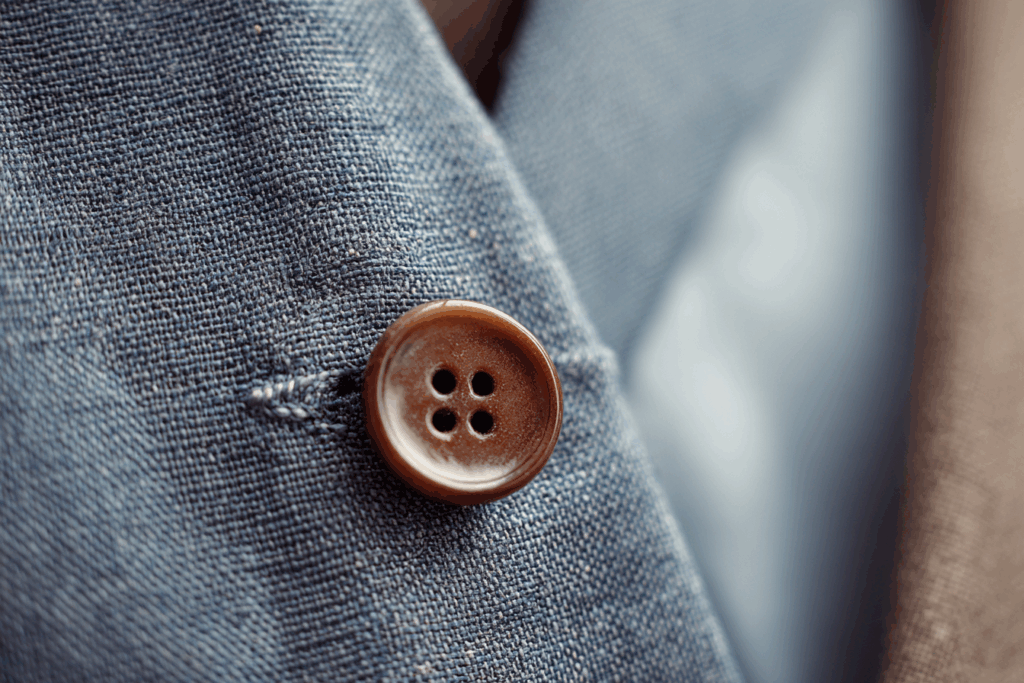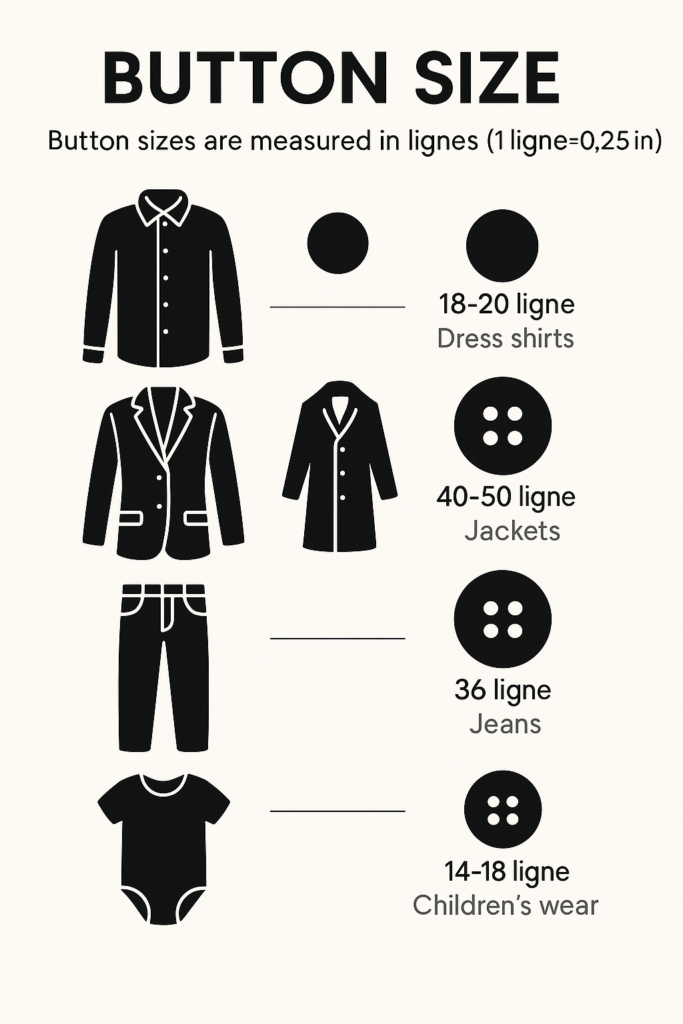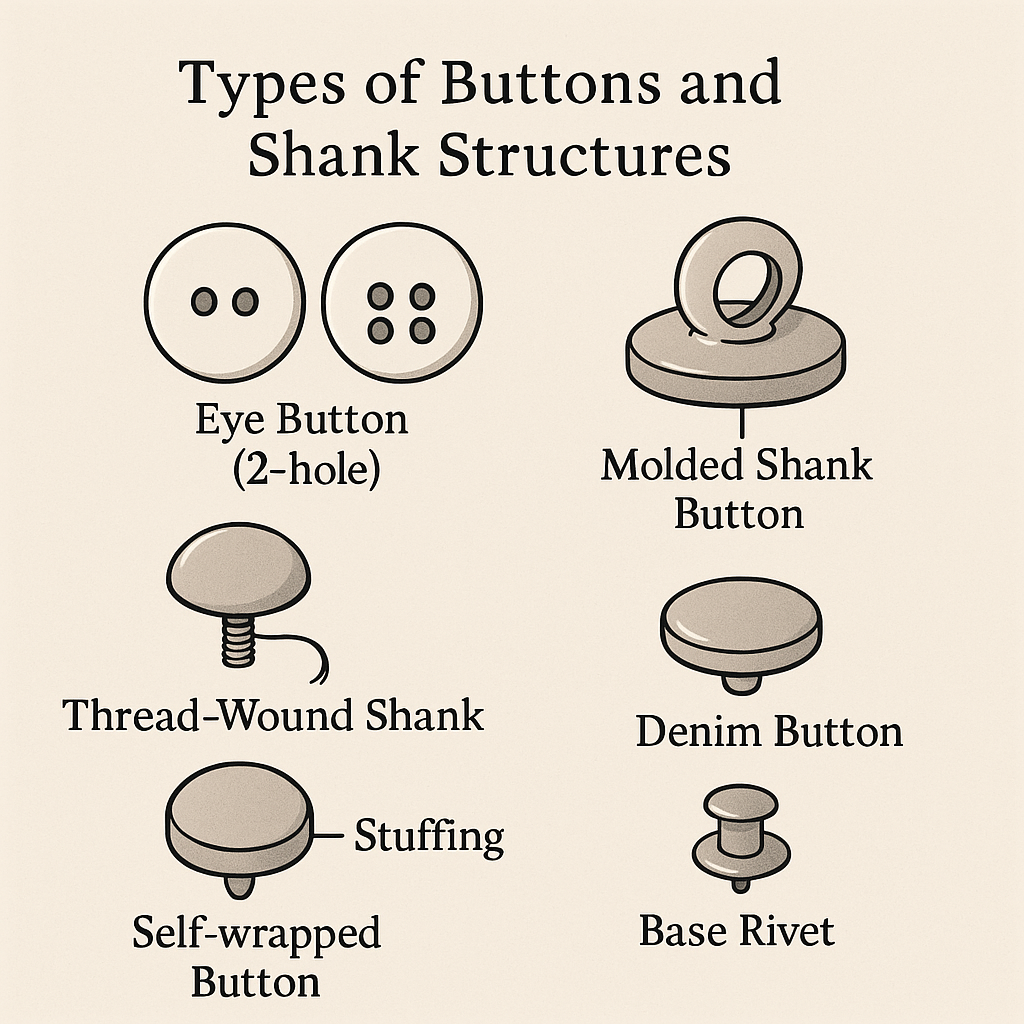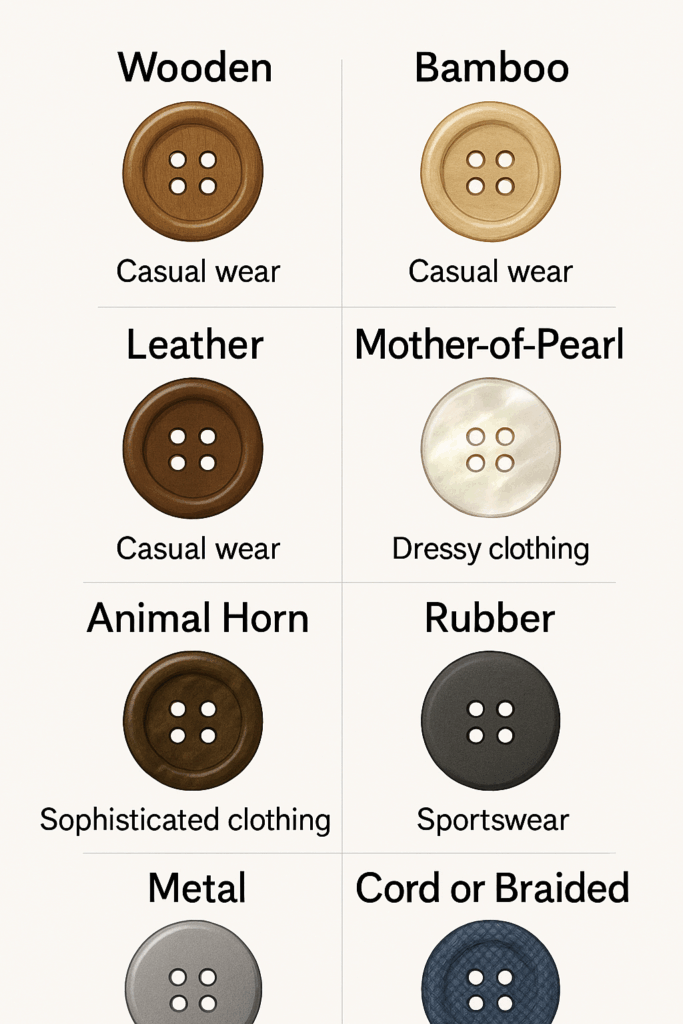✂️ Types of Buttonholes in Garment Construction: Function, Style, and Technique
Buttonholes are essential components in garment construction, providing not only functionality but also a touch of craftsmanship. From machine-made zigzags to luxurious bound and handmade buttonholes, understanding their differences ensures durability, aesthetic harmony, and proper fit with their corresponding buttons.
This article explores the primary types of buttonholes used in modern and traditional clothing, including their advantages, recommended fabrics, and usage scenarios.
🔹 What Is a Buttonhole?
A buttonhole is a reinforced opening in a garment that allows a button to pass through. It must:
- Match the size and shape of the button
- Be strong enough to withstand repeated use
- Prevent fraying or distortion of the fabric


🔸 Overview of Common Buttonhole Types
1. Zigzag Buttonhole
🧵 Most common machine-made type
✔️ Uses 304 lockstitch for security
✔️ Inexpensive, durable, neat
⚠️ Can unravel if not bar-tacked properly
📌 Use for: Shirts, blouses, everyday wear
2. Keyhole Buttonhole
🔑 Rounded end provides space for shank buttons
🧵 Sewn with lacing thread for extra durability
✔️ Ideal for thicker garments
✔️ Machine- or hand-made
📌 Use for: Coats, jackets, jeans, and heavier fabrics
3. Slit Buttonhole
✂️ No stitching required
✔️ Suited for non-fraying materials
✔️ Edges are melted or sealed
📌 Use for: Leather, PVC, thermoplastic, raincoats
4. Bound Buttonhole
📦 Looks like a miniature welt pocket
🧵 Fabric from garment or contrast color
✔️ Hand-sewn, labor-intensive, high-end
❌ Not suitable for light or loose fabrics
📌 Use for: Luxury coats, formal suits, women’s wear
5. Covered Buttonhole
🧶 Covered with fabric like bound buttonholes
✔️ Can be decorative with contrast fabric
⚠️ Needs careful interior finishing
📌 Use for: Dresses, couture jackets
6. Invisible Buttonhole (Sewn-on Buttonhole)
🕳️ Discreet and subtle
✔️ Created by leaving a seam unsewn during production
✔️ Hand-closed from the back
📌 Use for: Corsets, double-breasted garments, minimalist designs
7. Oval Buttonhole
🔄 Rounded at both ends
✔️ Requires expert technique
✔️ Decorative + functional
📌 Use for: High-end fashion, visible button details
8. Handmade Buttonhole (Twisted Thread Buttonhole)
🪡 Sewn with twisted/waxed thread
✔️ Prevents fraying in delicate or thick fabrics
❌ Time-consuming and requires skill
📌 Use for: Tightly woven, fragile fabrics, custom tailoring
🧵 Buttonhole Finishing & Common Issues
- The final step in buttonhole formation — slicing the opening — is crucial.
- A dull blade or misaligned cut can shorten the buttonhole, causing:
- ❌ Poor button fit
- ❌ Difficulty fastening/unfastening
- ❌ Damage to fabric or thread over time
✅ Always test buttonhole length on sample fabric before final application.
📌 Buttonhole Type Comparison Table
| Type | Stitch Type | Machine/Hand | Best For |
|---|---|---|---|
| Zigzag | 304 Lockstitch | Machine | Shirts, casualwear |
| Keyhole | Lacing Thread | Machine/Hand | Coats, jackets, jeans |
| Slit | None | Manual | Leather, synthetic rainwear |
| Bound | Hand Sewn | Hand | High-end women’s clothing |
| Covered | Hand Sewn | Hand | Decorative/contrast detailing |
| Invisible (Sewn-in) | Seam-based | Hybrid | Corsets, hidden closures |
| Oval | Advanced | Hand | Decorative/high-end garments |
| Handmade (Twisted) | Waxed Thread | Hand | Fragile or thick fabric areas |


